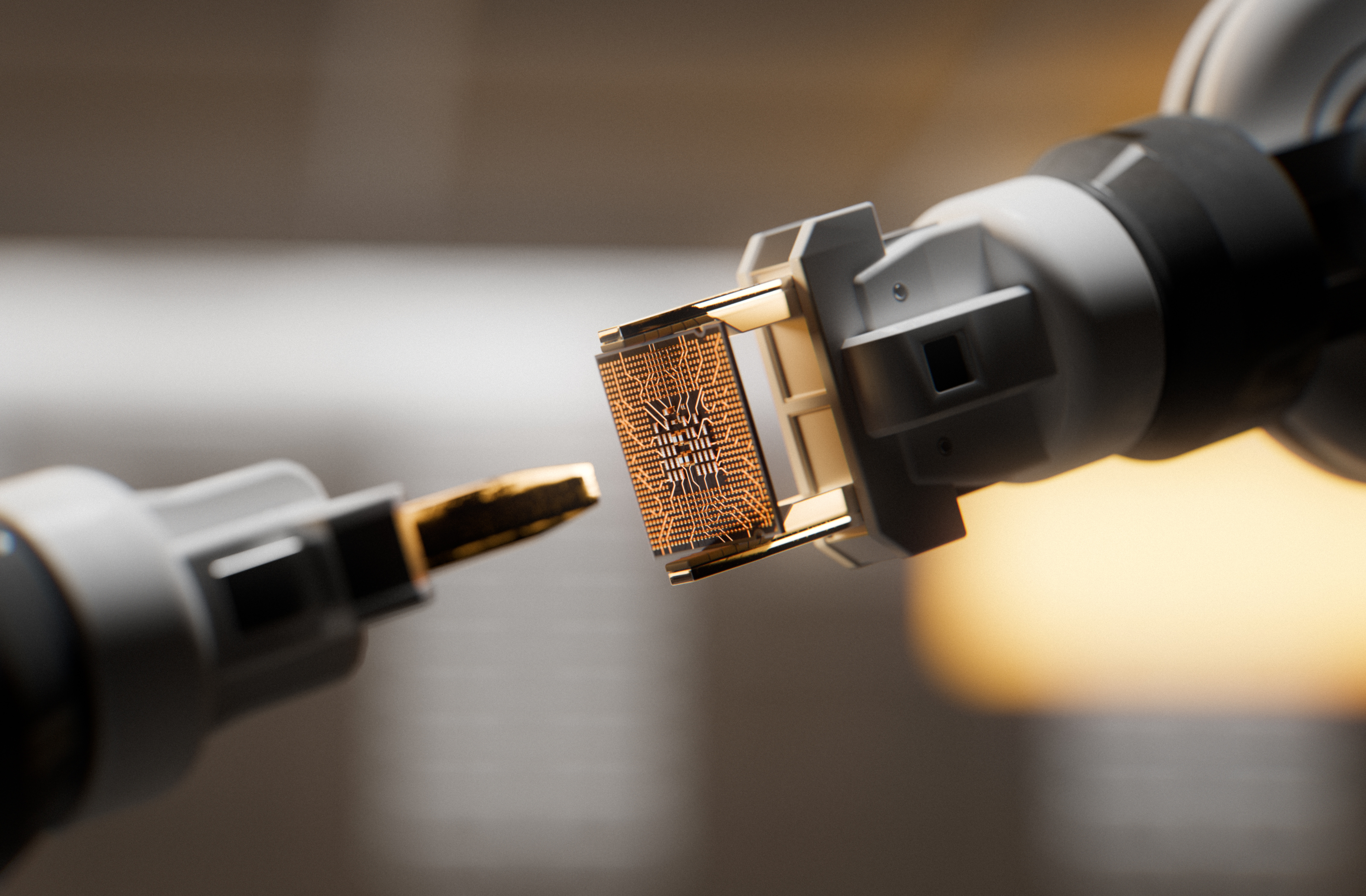
Earlier this month Donald Trump took a hatchet to the fragile US-China trade truce that had just about held through the summer. The US president threatened additional 100% import tariffs on Chinese goods and further restrictions on technology exports to China. The threats are due to be implemented on 1 November.
A couple of days later, Trump struck a more conciliatory tone, though the November deadline currently remains in place. A sharp sell-off in US equities and a steep decline in US Treasury yields appear to have prompted a change of heart.
Still, the outburst was not entirely unexpected. It comes in response to a spate of Chinese actions against US firms, including - most significantly - Beijing’s expansion of export controls on rare earth materials.
Each side blames the other for the re-ratcheting of tension. But the dispute reveals a fundamental rift at the heart of US-China relations that could fuel trade tensions for years to come. Chinese rare earths and US advanced semiconductors have locked the nations in a toxic relationship characterised by distrust. Regular cycles of threats and retaliation are the likely result.
Minerals and microchips

Trump’s tariff threat was a direct response to Beijing’s latest attempts to tighten its grip on the global supply of rare earth materials. On 9 October, China announced a broader case-by-case licensing regime for rare earths exports and the technologies needed to process or recycle them. The new restrictions, which impact every country that imports Chinese rare earths, fall short of a formal export ban but are restrictive enough to function like one in practice.
In addition, China listed several US defence firms as “unreliable entities”, initiated an antitrust investigation into an acquisition involving US chipmaker Qualcomm, and announced port fees on US ships docking in Chinese ports.
Beijing framed the move as a matter of national security due to the use of rare earths in numerous military applications. But these minerals and elements are also essential to the manufacture of semiconductors and products that contain them, along with electric vehicles, wind turbines and a range of other goods.
China has a stranglehold on the sector, accounting for 69% of rare earth mining and 91% of refining in 2024. Trump’s agitated response was a tacit acknowledgement of the West’s dependence on a country he considers hostile. More recently, US Treasury Secretary Scott Bessent has talked up the possibility of the US taking direct stakes in key rare earth companies to counter Beijing’s dominance. Achieving that ambition is likely to be a long and costly process.
Trading blows
China’s framing of its recent actions is instructive. The national security angle mirrors US rationale for banning sales of advanced semiconductors to China. In rare earth materials and the powerful semiconductors they become part of, the two nations have created a toxic relationship of mutual vulnerability.
Against that background, China is likely using rare earth export controls as leverage in informal talks pencilled in for the sidelines of the Asia-Pacific Economic Cooperation (APEC) summit in South Korea at the end of the month, where Trump and Xi are likely to meet. It has successfully done so before.
“China implemented a rare earth export suspension in April in response to Trump’s first tariff barrage,” says Christian Bürger, Senior Editor at Atradius. “With more bureaucratic delays in May, US and European manufacturers faced acute supply shortages, production disruptions and a scramble to identify alternative sources. The pain proved sufficient to force Washington back to the negotiating table.”
The pain of previous rare earth export curbs proved sufficient to force the US back to the negotiating table
The pain may soon return. Foreign companies were already struggling to gain rare earth export licences. China had granted just 19 of 141 licence requests from European firms as of early September, according to the European Union Chamber of Commerce in China. Frustrations continue, with Chinese officials demanding that foreign companies hand over sensitive product designs to be considered for a licence.
The US could probably make all this go away tomorrow if it wanted to. China almost certainly wants an easing of US restrictions on semiconductor and AI chip export controls in return for more generous rare earth terms. Other objectives in upcoming talks will be the removal of Chinese firms from trade blacklists and a permanent tariff framework that includes a tariff reduction timetable.
The likely outcome: whatever happens, nobody wins
There are very good reasons for the parties to make some sort of deal soon. A prolonged trade war between the world’s two largest economies based on rare earths and advanced microchips is in nobody’s interests.
“Even partial disruption of rare earth supply chains would echo across markets,” says Dana Bodnar, Senior Economist at Atradius. “In that scenario, Oxford Economics expects that this could trim US growth by around 1 percentage point and China’s by 0.4 percentage points over two years. The market shock would be even larger, with inflation and risk premia rising sharply.”
If Washington follows through on its 100% tariff threat and China retaliates, the consequences would be grimmer still. “In that scenario, 2026 global economic growth could end up more than 1% lower than the current forecast of 2.6%,” Bodnar adds. “The US and the eurozone could face recession, and China a significant hit to its GDP.”
In case of a trade war escalation the US and the eurozone could face recession, and China a significant hit to its GDP.
Electronics in the crosshairs
In sector terms, China’s rare earth controls could delay production processes and increase input costs across a range of industries. Defence, aerospace, electric vehicles and renewables are just some of the sectors that rely on rare earth materials.
Makers of electronics and semiconductors are especially vulnerable. Case-by-case licensing risks disrupting high-end chip output in the US, South Korea and Taiwan.
Case-by-case licensing of rare earth exports risks disrupting high-end chip output.
“Export curbs risk disrupting AI and memory-chip supply chains in South Korea and Taiwan, which have been critical buffers to Asia's slowing momentum,” says Kyle Kong, Senior Underwriter at Atradius and the firm’s sector specialist for electronics and ICT. “Extending controls to chip design and production materials deepens the technology standoff. The list of products in scope includes those involved in the design and production of advanced semiconductors, as well as the chips themselves.”
The best result may be more of the same

At the moment, we don’t think worst-case scenarios are the most likely. There’s a good chance that informal talks when the parties gather at APEC will produce another temporary de-escalation similar to the Geneva and London frameworks.
But any reprieve is likely to be temporary. China might roll back some of its new rare earth controls in the spirit of detente, but it is unlikely to dismantle such a powerful bargaining tool altogether. The US could drop the 100% tariff threat and make other concessions, but will be averse to any compromise that threatens its advantage in the production of advanced microchips.
“Whatever the outcome of an informal summit at the APEC meeting, the fundamental challenge will remain unresolved,” says Bürger. “The US cannot presently secure its technology advantage without access to Chinese rare earths, while China cannot presently achieve its development goals without access to US semiconductor technology.”
Neither is keen to give ground, and that standoff sits at the heart of an antagonism that could last for years. The October actions from both sides have caused further damage to the already strained bilateral relationship. Until both sides recognise that weaponising interdependence creates mutual vulnerability rather than strategic advantage, we are likely to see repeated escalation cycles of increasing severity. Businesses can expect ongoing insecurity and periodical flare-ups of severe trade tensions and tariff threats.
In an era characterised by AI and the transition to clean energy, rare earth elements and the semiconductors that need them are central to a dispute with no end in sight.



































